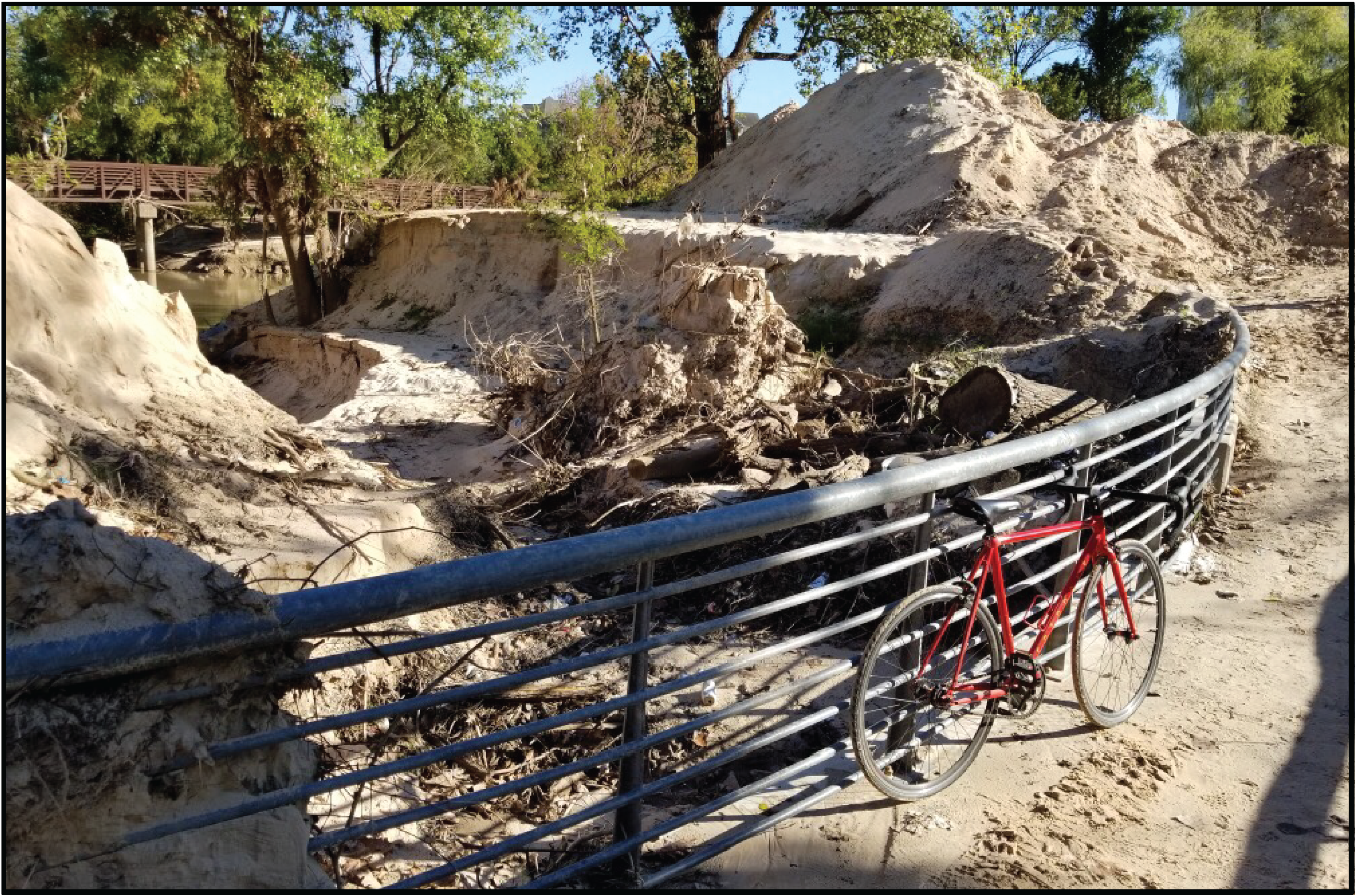HGS E & E Meeting-Buffalo Bayou Flooding
In order to register, please click login to either sign in to an existing account or create a user profile. Go to the HGS home page and login with your user name and password and then return to this page in order to register as a member or guest of a member. For help registering contact the HGS office or email webmaster@hgs.org. Thank you!
Wednesday, January 10
Craft Republic Houston • 11470 Westheimer Rd.
Social 5:30 p.m., Dinner 6:30 p.m., Presentation 7:30- 9:00 p.m.
Cost: $35 Pre-registered members; $40 non-members & ALL walk-ups
To guarantee a seat, pre-register on the HGS website and pay with a credit card. You may walk up and pay at the door if extra seats are available. Please cancel by phone or email within 24 hours before the event for a refund. Online & pre-registration closes Wednesday, at 5:00 a.m.
Sediment Routing in an Incised Valley during Hurricane Harvey (2017) in Houston: Implications for Modern Sedimentation
Speaker: Andrew Stearns
The Houston area recorded the largest flooding event in US history during Hurricane Harvey from August 25-31, 2017, mobilizing millions of m3 of sediment in fluvial-estuarine systems. An integrated quantitative analysis to determine the net minimum volume of sediment transported during the storm demonstrates that the 12 fluvial-estuarine streams and 2 controlled reservoir drainages transported a minimum of ~2.723×107 m3 of sediment. This volume is ~6-51 times larger than the average annual volume of sediment delivered to Galveston Bay in modern times (<200 years), and ~30-118 times larger when compared to Holocene rates. Nearly ~26% of the measured volume was deposited in Addicks and Barker reservoirs. In the stream drainages, sediment was mobilized from the west-northwest of Houston and pulsed towards Galveston Bay, highlighting the extreme short-term variability in sediment delivery.
Sediment flux during Harvey is an example of sediment storage followed by a pulsed delivery of high sediment volume rather than continuous delivery of sediment. A comparison of sediment volumes transported through natural and modified drainages through Houston demonstrates that channel modification resulted in significant bypass of sediment downstream. Urban watershed management is more effective when continual updates are implemented based on regional circumstances rather than based on historical fluxes.

About the Speaker

Andrew Stearns is a Product Owner for the Well Data Products (WDP) group at TGS since 2021. In that role, he is responsible for managing the full product lifecycle of pressure data and in-house basin models across North America. Andrew holds an M.Sc Geology from the University of Houston and a B.Sc Geology from the University of Texas.
He also serves as the organizing committee chair for the HGS Student Expo, the largest job fair for geoscience students in the US.
11470 Westheimer Rd.
Houston, TX 77077
United States
| E&E Meetings | |
| HGS Member | $ 35.00 |
| Non-HGS Member | $ 40.00 |
|
Event Attachments
|
|
Event Contact
|
|
Committee
|
|
Event Filter Informations
|


